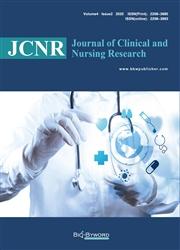Study on the diagnostic value of VEGF, CA19-9 and CEA in pancreatic cancer and the risk factors of vascular invasion
引用次数: 0
Abstract
Background: Pancreatic cancer is a malignant tumor of the gastrointestinal tract. Due to its insidious onset, most patients with newly diagnosed pancreatic cancer have missed the opportunity for radical surgery, which offers patients the best chance of survival. The 5-year survival rate of patients with pancreatic cancer can be improved with early diagnosis, and serum tumor makers are an inexpensive and convenient diagnostic tool that is widely used in the diagnosis of malignancies. Objective: To determine the diagnostic value of vascular endothelial growth factor (VEGF), carbohydrate antigen 19-9 (CA 19-9), and carcinoembryonic antigen (CEA) in patients with pancreatic cancer and the risk factors of vascular invasion. Methods: An experimental group comprising 52 patients with pancreatic cancer admitted to our department from July 2021 to July 2022 and a control group comprising 21 patients with benign pancreatic diseases during the same period were included in our study. Their serum VEGF, CA 19-9, and CEA levels were detected and compared between the two groups, and the correlation between the three markers in the invaded vessel and non-invaded vessel groups was investigated. The diagnostic value of a single tumor marker and in combination for pancreatic cancer was analyzed, and the three tumor marker levels of the experimental group in different pathological characteristics were detected and compared. Results: The experimental group had higher serum VEGF, CA 19-9, and CEA levels than the control group (P < 0.05). Through a receiver operating characteristic (ROC) curve analysis, the combined detection had the highest value for the diagnosis of pancreatic cancer, in which the area under the curve (AUC) was 0.9158 (95% CI: 0.8415–0.9900), while the sensitivity and specificity were 76.19% and 98.08%, respectively. Serum VEGF and CA 19-9 levels were higher in stage III–IV pancreatic cancer patients and those with tumor metastasis compared with stage I–II patients and those without metastasis (P < 0.05), respectively. Binary logistic regression analysis was performed to determine the risk factors of vascular invasion in pancreatic cancer, and the results showed that only serum VEGF was a risk factor (P < 0.05), OR (95% CI): 1.001–1.006. Conclusion: Patients with pancreatic cancer have significantly higher serum VEGF, CA 19-9, and CEA levels, and the combined detection of tumor markers is of high clinical value in its diagnosis. In addition, serum VEGF is an independent risk factor of vascular invasion in pancreatic cancer, which can predict vascular invasion to a certain extent.血管内皮生长因子、CA19-9和癌胚抗原对癌症的诊断价值及血管侵袭危险因素的研究
背景:胰腺癌是一种发生在胃肠道的恶性肿瘤。由于胰腺癌的发病隐匿,大多数新诊断的胰腺癌患者都错过了根治性手术的机会,而根治性手术为患者提供了最好的生存机会。早期诊断可提高胰腺癌患者的5年生存率,血清肿瘤标志物是一种廉价、便捷的诊断工具,被广泛应用于恶性肿瘤的诊断。目的:探讨血管内皮生长因子(VEGF)、碳水化合物抗原19-9 (CA 19-9)、癌胚抗原(CEA)对胰腺癌的诊断价值及血管侵犯的危险因素。方法:选取2021年7月至2022年7月我科收治的52例胰腺癌患者作为实验组,选取同期胰腺良性疾病患者21例作为对照组。检测两组患者血清VEGF、CA 19-9、CEA水平,并比较三者在侵血管组和非侵血管组的相关性。分析单一肿瘤标志物及联合肿瘤标志物对胰腺癌的诊断价值,检测并比较实验组不同病理特征下的三种肿瘤标志物水平。结果:实验组血清VEGF、CA 19-9、CEA水平明显高于对照组(P < 0.05)。通过受试者工作特征(ROC)曲线分析,联合检测对胰腺癌的诊断价值最高,曲线下面积(AUC)为0.9158 (95% CI: 0.8415 ~ 0.9900),敏感性和特异性分别为76.19%和98.08%。III-IV期胰腺癌患者血清VEGF和CA 19-9水平高于I-II期和无转移患者(P < 0.05)。对胰腺癌血管浸润的危险因素进行二元logistic回归分析,结果显示只有血清VEGF是危险因素(P < 0.05), OR (95% CI): 1.001 ~ 1.006。结论:胰腺癌患者血清VEGF、CA 19-9、CEA水平明显升高,联合检测肿瘤标志物对胰腺癌的诊断具有较高的临床价值。此外,血清VEGF是胰腺癌血管侵袭的独立危险因素,可在一定程度上预测血管侵袭。
本文章由计算机程序翻译,如有差异,请以英文原文为准。
求助全文
约1分钟内获得全文
求助全文

 求助内容:
求助内容: 应助结果提醒方式:
应助结果提醒方式:


